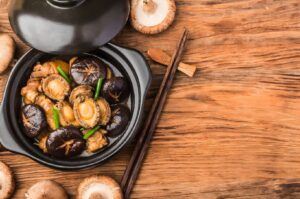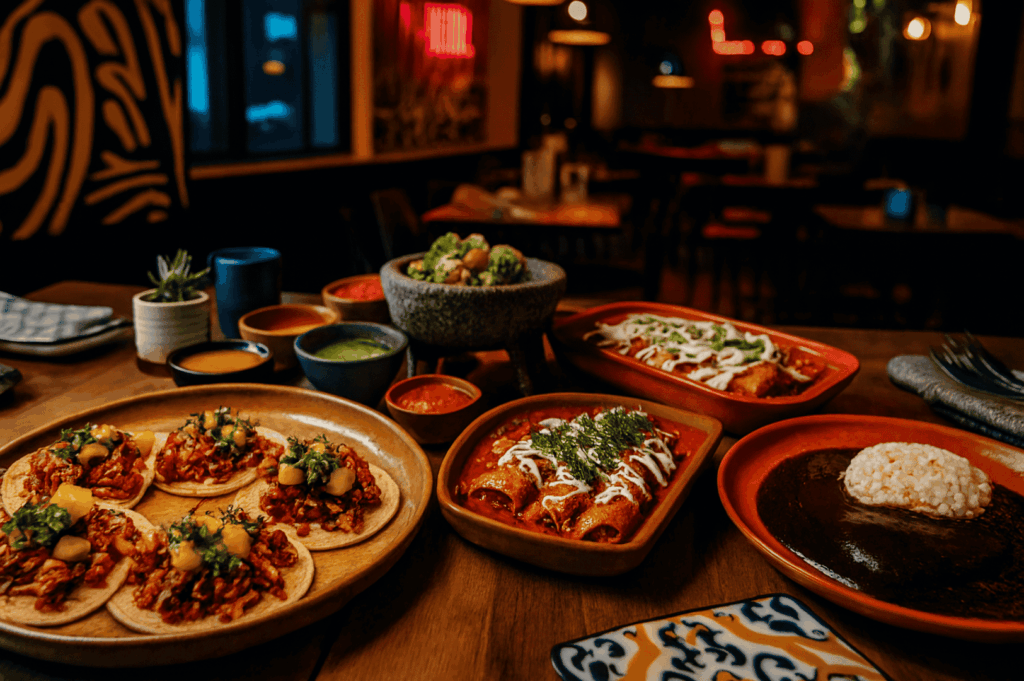
Mexican cuisine stands among the world’s most beloved culinary traditions, its vivid, bold flavours celebrated in countless cities and Mexican restaurants across the globe. Beyond the taco trucks and tex mex staples, authentic Mexican food invites diners to experience exciting flavours shaped by thousands of years of culinary history, indigenous ingenuity, and a lively atmosphere that makes every meal an event.
The foundations of Mexican cuisine are rooted in earth and heritage, with authentic techniques and regional variety underpinning a diverse menu of dishes. Whether you’re sampling savory carne asada or warming your hands around a mug of Mexican hot chocolate, understanding these ancient foodways is key to appreciating the culture behind the meal.
The Historical Foundations of Mexican Cuisine: Mexican Culinary History and Convergence
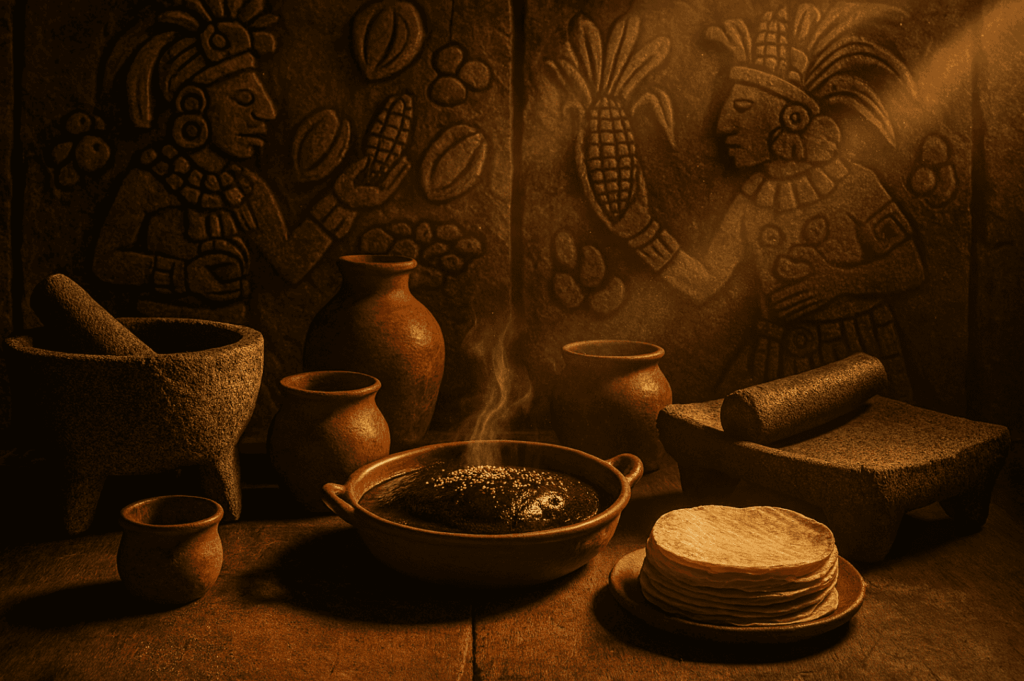
The origins of Mexican food reach deep into pre-Hispanic civilizations such as the Maya and the Aztecs. Their complexity as agriculturalists is visible through ancient staples like corn tortillas, black beans, and fiery chiles, forming the backbone of modern Mexican cuisine. Ingenious uses of the maguey plant, the creation of chinampas (floating gardens), and the art of slow-cooking meats set the template for dishes both humble and elaborate.
Mexican Staples: The Holy Trinity of Authentic Mexican Food—Corn, Beans, and Chiles
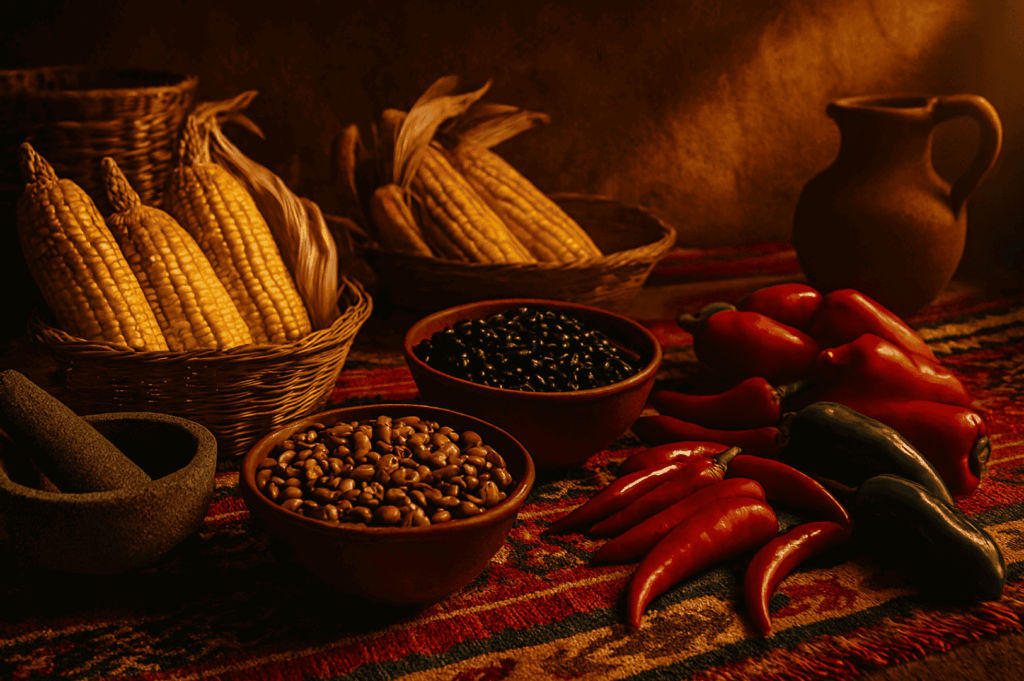
The Sacred Role of Corn
Of all Mexican staples, corn reigns supreme. Ancient nixtamalization—a process where dried field corn is cooked in limewater—boosts the nutritional value and yields masa, the dough for corn tortillas, tamales wrapped in corn husks, and fried corn tortillas used for tostadas, tortilla chips, and sopa azteca (tortilla soup). Visiting Mexico means savoring these versatile bases, often enjoyed with refried beans or as part of a main meal with all the toppings.
The World of Mexican Chiles
Mexican chiles define the cuisine’s bold flavours and depth. From the bright heat of jalapeños in salsa verde to the complex smokiness of dried ancho chiles, varieties are endless. Hot sauce fans and chefs alike adore the spectrum—from mild, fruity guajillos to the intense heat of habaneros, providing a foundation for everything from mole poblano to shrimp tacos al pastor.
Regional Mexican Dishes and Mexican Food: A Tour of Diversity
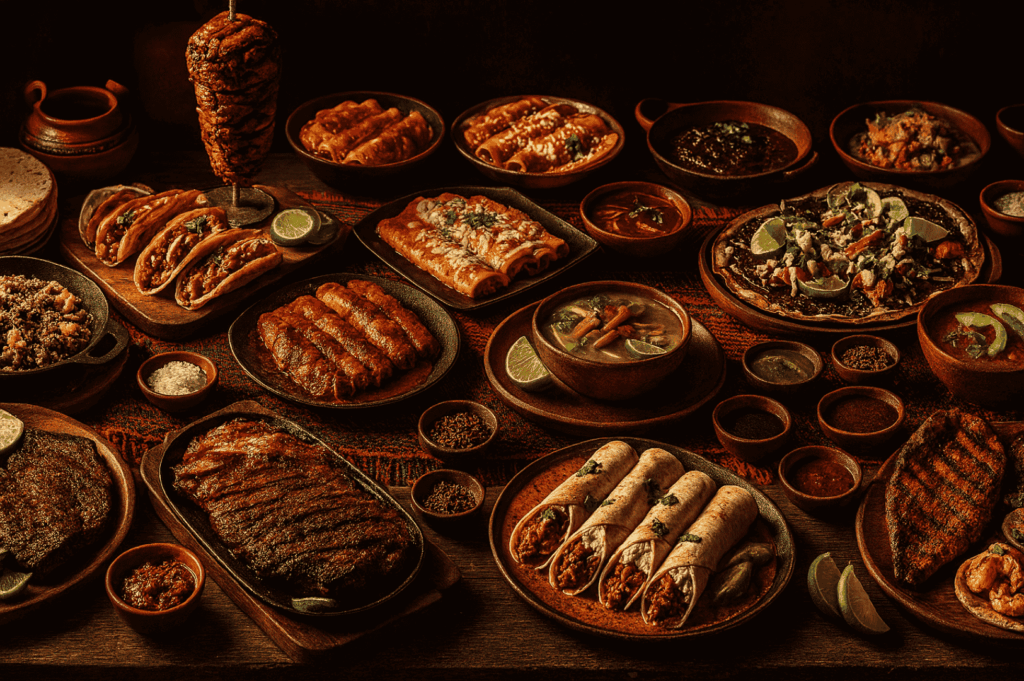
Northern Mexico
In the north, grilled meat takes center stage—often accompanied by large tortillas. Carne asada, a star at both home gatherings and Mexican restaurants, is classic grilled steak marinated in lime juice and spices, sometimes finished with a splash of hot sauce. Machaca, shredded beef or pork with eggs, and the regional love of wheat flour tortillas set northern cuisine apart.
Central Mexico
Central Mexican cuisine, especially in Mexico City, thrills visitors with iconic street food and diverse Mexican dishes. Try tacos al pastor, spit-roasted pork marinated with annatto seed and fresh fruit; chicken enchiladas topped with creamy sauce; or sopa azteca—a comforting tortilla soup with chicken, cheese, and aromatic herbs. Mole poblano, with its complex blend of chiles and chocolate, is an authentic Mexican food icon.
Oaxaca: The Land of Seven Moles
Oaxaca is where authentic Mexican flavours operate at full spectrum. This region celebrates the best Mexican foods with seven distinct moles, from herbaceous mole verde to dark, rich mole negro. Tlayudas (Mexican pizza) are large tortillas topped with black beans, cheese, and carne asada, while chapulines—seasoned grasshoppers—demonstrate a love for fresh, protein-rich street food.
Mexican Flavor Profiles: The Building Blocks of Authentic Mexican Flavours
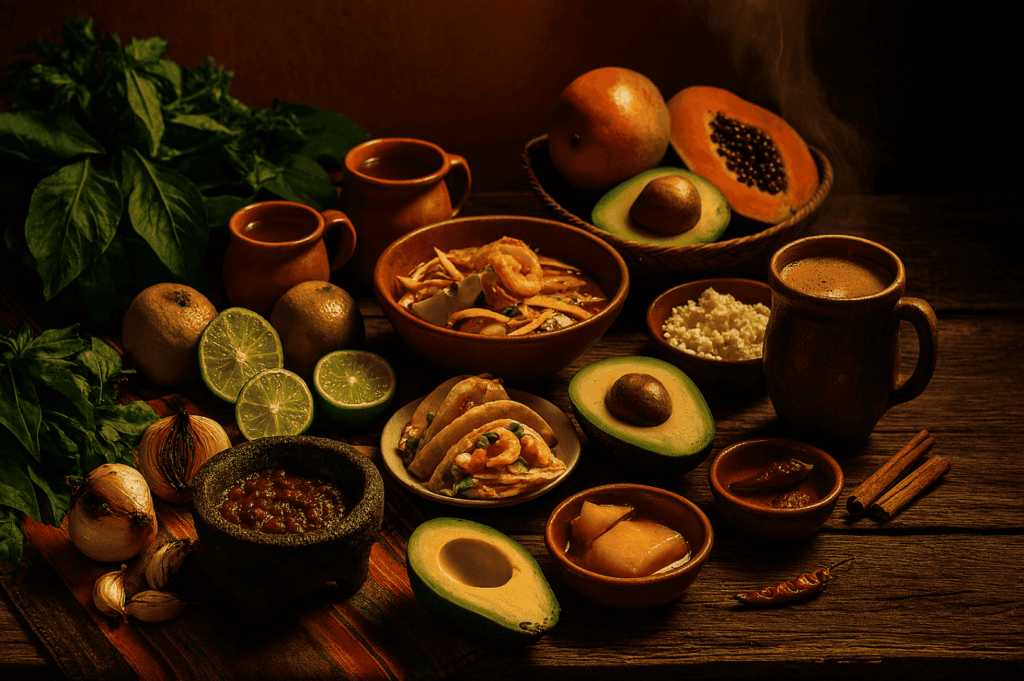
Fresh ingredients and thoughtful technique create the distinct palate of Mexican cuisine:
- Herbs like epazote and hoja santa impart robust, aromatic undercurrents.
- Aromatics such as onions and garlic, often charred, provide depth for soups and salsa.
- Acidic touches from lime juice, sour orange, and vinegars cut through rich, spicy foods—in tortilla soup, cochinita pibil, or shrimp tacos.
- Richness comes from avocado, cotija cheese, lard, and fresh fruit, making for hearty, satisfying meals.
- Hot chocolate and Mexican hot chocolate—made with cinnamon and sometimes chili—offer a comforting, slightly bitter drink.
Mexican Restaurants, Best Mexican Foods, and the Evolution of Mexican Cuisine Today
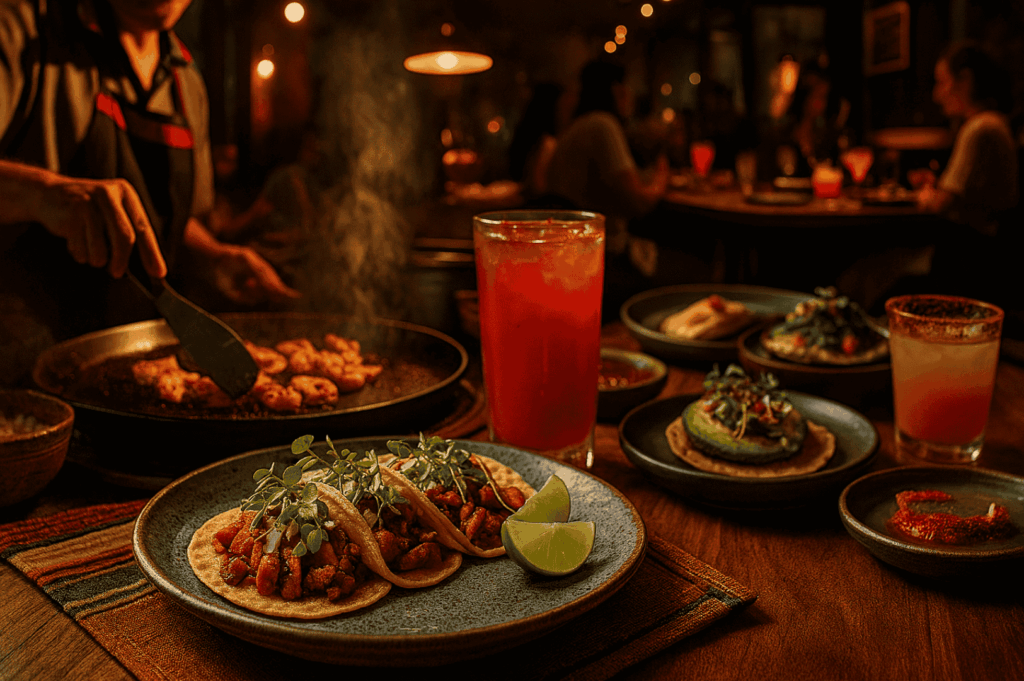
From the bustling street food markets of Mexico City to international staples like Guzman y Gomez, Mexican cuisine continues to evolve. Leading chefs are reinventing authentic Mexican flavours with fresh ingredients and modern presentations while maintaining respect for tradition. The restaurant scene now reflects the diversity and excitement of Mexican cuisine, offering everything from tacos al pastor to vegan options and creative drinks. Not all Mexican restaurants are alike—hunt for those offering naturally sweet aguas frescas, spicy shrimp tacos, and other fillings that carry bold, exciting flavours.
A World of Flavour to Explore
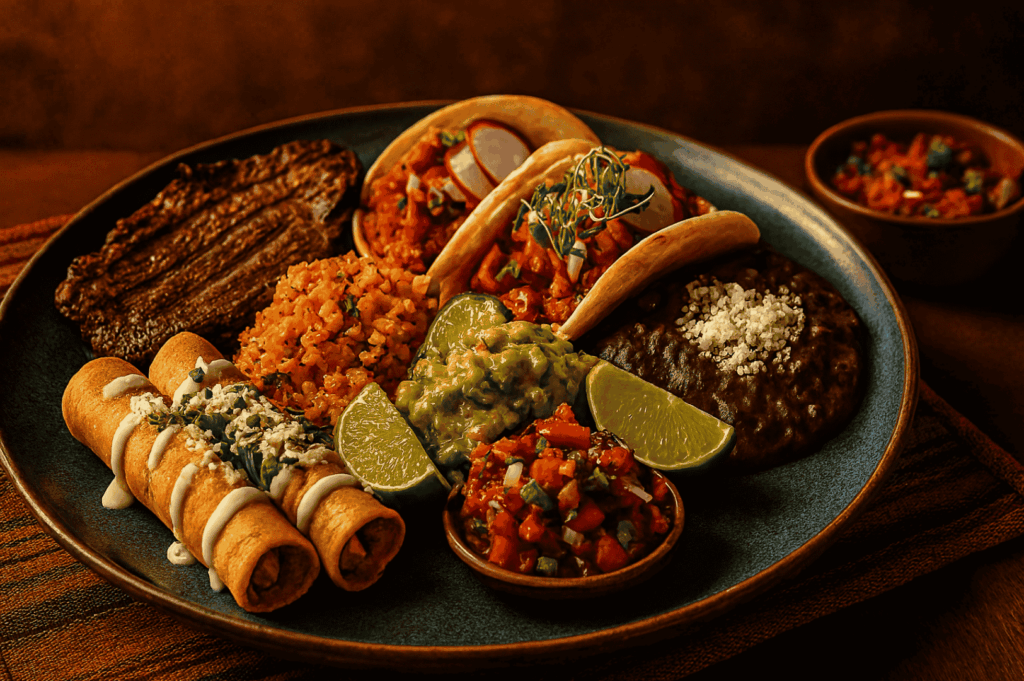
The foundations of Mexican cuisine deliver an endless world of authentic Mexican food discovery, from complex moles to creamy tortilla soup, carne asada, and chicken enchiladas. With their deep roots, variety of ingredients, and energetic presentation, Mexican dishes are more than food—they are a celebration of heritage, community, and the pleasure of eating. Whether you’re flipping through the drinks menu of your local Mexican restaurant, tasting hot chocolate with friends, or daydreaming about visiting Mexico for street food, let your next meal introduce you to truly authentic Mexican flavors.
Want to explore more global food cultures? Check out The Evolution of American Food in Singapore: From Fast Food to Fine Dining or dive into The Essence of Vietnamese Cuisine: A Perfect Balance of Freshness and Depth.
